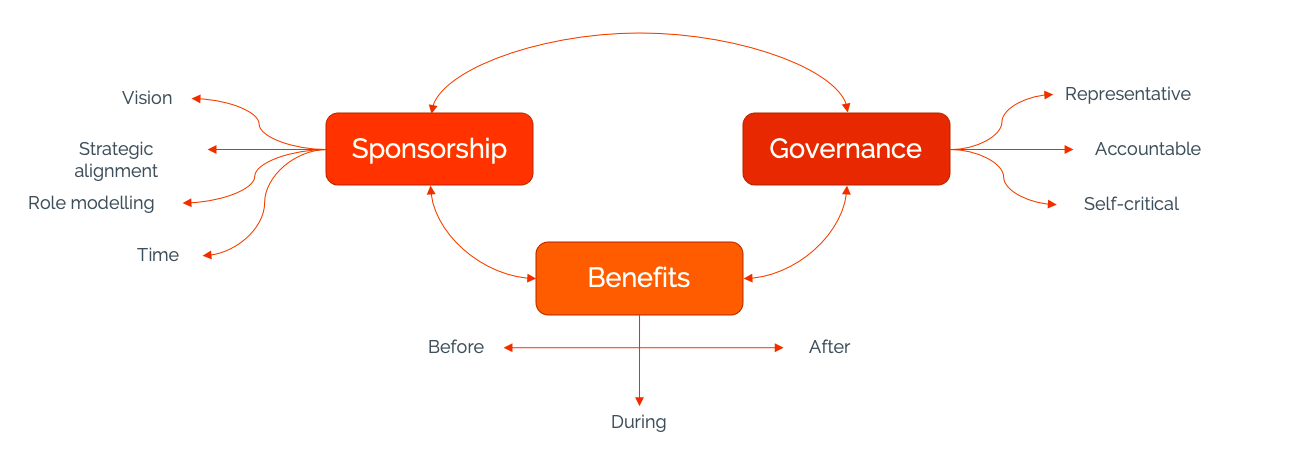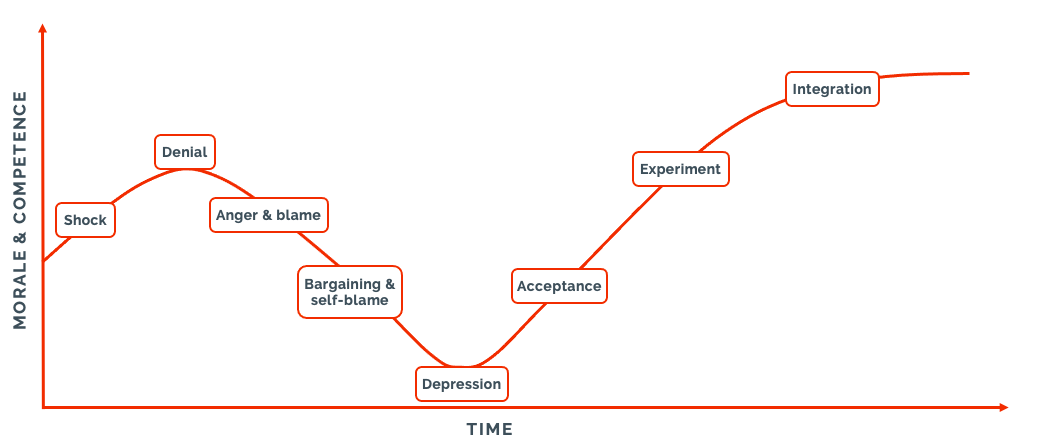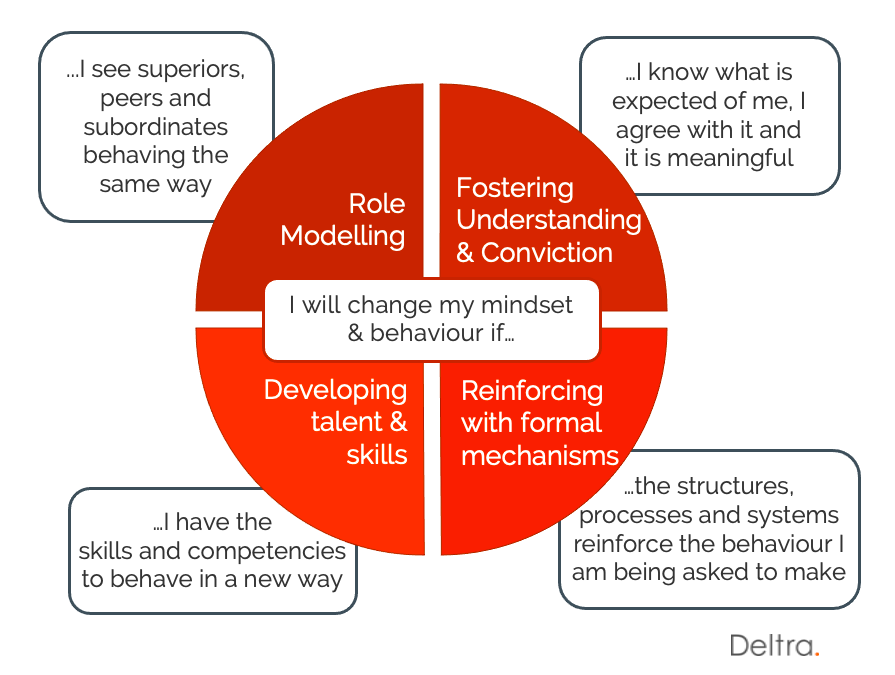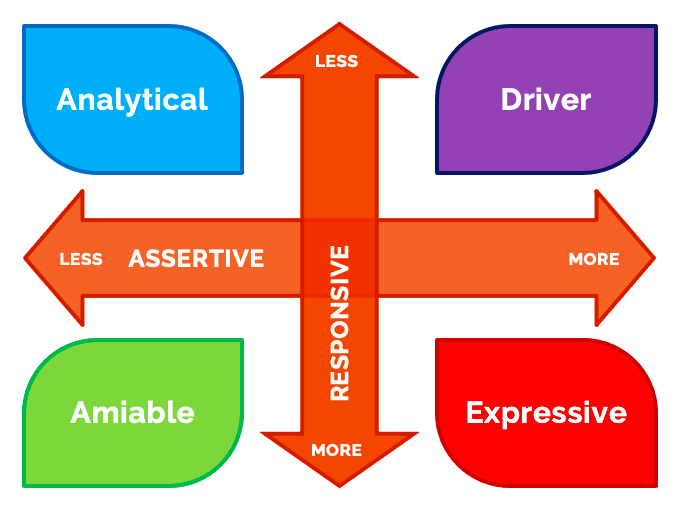Webinar Round-up: Making Change Stick: Hacks for Organisational Change
Business transformation professionals know how to make change happen – that’s a key requirement of the job. But as many people implementing change work on an interim basis, one of the trickier elements of the industry is making sure that the change is truly embedded and lasts once you’ve left the organisation. Our latest webinar tackled this very issue.
We enlisted the help of Richard Carter, who has 25 years’ experience delivering portfolios of technology-enabled programmes. Richard started his career working in the Human Performance & Change Management practice at Accenture. Since then, he’s developed a real interest in the people side of change, as well as managing change effectively and increasing adoption for stronger business outcomes. Richard was kind enough to share what he’s learned throughout his career, offering up the factors he deems most important for successful change, which skills are required by change leaders, and some tools that you may find useful in your transformation programme.
Change success factors
Sponsorship
A solid transformation programme requires a strong sponsor that has the authority to communicate the programme throughout the organisation and act as a role model to others. This means that they can articulate the vision and how it aligns with the wider organisational strategy.
Richard noted that the sponsorship sometimes defaults to the most senior person, but are they able to commit sufficient time to the programme? More importantly, do they have the sufficient skills to act as sponsor?
Governance
Programme Boards or Project Steering Committees should be accountable for successful delivery of the change. In practice, these groups can become bloated with people who are only there to critique and review without contributing much. Instead, only active contributors should make up these groups as they will represent the programme appropriately. Make sure that these people are aware of other changes within the business.
Benefits
Richard emphasised the importance of having a clear understanding of the desired benefits before, during and after the implementation of change. Before, to ensure that the right investment decision is being taken. During, so that you are aware of how trade-offs (e.g. time, cost, quality, risk) will impact the benefits. After, to track the benefits and see where action might need to be taken to get a return on investment.

If you are missing or slacking in one of these areas, your chance of success will be much lower. Furthermore, they’re mutually complimentary. Proper sponsorship promotes strong governance, which in turn supports a benefits-led approach to change.
Skills for leading change
Foster innovation – The leader doesn’t have to be the most innovative person in the room, but a strong leader will create an environment that allows people to feel free to innovate and share ideas without judgement.
Act quickly – A slow programme will increase resistance and make it more difficult and painful for all involved. Leaders who speed up the process where possible are usually more effective in the long run.
Maintain strategic perspective – Too often, organisations get caught up in the change process and forget to tie the change back to the organisational strategy.
“Making a change without a clear strategy is like being lost in the woods and deciding to walk faster, despite the lack of a clear path to your destination.”
Develop external perspective – People naturally tend to focus on internal changes during a change programme. When you’re caught up in internal politics or conflicts, you could fail to see what is happening outside of your organisation and miss the chance to change tact.
Inspire and motivate – Many leaders begin the change process with a big push – think deadlines, timelines, direction and deliverables. This will get initial traction but combining a results-driven approach with an inspiring and motivating attitude will have a more favourable outcome.
Tools
The Change Curve
Change must be well-planned to achieve positive results, but change is hard to incorporate and, for many people, accept. Everyone goes on an individual journey when embroiled in change, and by understanding that journey you can hopefully narrow and flatten the Change Curve. Importantly, people move at different rates through the stages between shock and integration, and people may even move backwards.
 As someone introducing change, you can use your knowledge of the Change Curve to give individuals the information and help they need depending on which stage they’re in. This will accelerate change and improve its likelihood of success.
As someone introducing change, you can use your knowledge of the Change Curve to give individuals the information and help they need depending on which stage they’re in. This will accelerate change and improve its likelihood of success.
The McKinsey Influencing Model
This model is designed to illuminate how to encourage people to change their behaviour. It’s a very practical model that can be referred to throughout a programme to determine the actions you should be taking to implement change.

It must be clear why the change is needed, there must be appropriate reinforcement mechanisms in place, employees must have the skills to operate in the new way, and seniors should be role modelling the appropriate behaviours you want to be adopted.
People Styles
This tool is designed to encourage stronger one-to-one engagements and focuses on observable behaviours that require no prior knowledge of the person. All styles have their own strengths and weaknesses, there is no hierarchy, but identifying them can be a great help.
There are two dimensions of behaviour in this model: assertiveness and responsiveness. More assertive people are seen by others to be more forceful and direct. They move faster, gesture more vigorously, make more eye contact, lean forward, and speak quicker, louder and more often. More responsive people show their emotions more or are more aware of others’ feelings. These people appear more friendly, are comfortable with small talk and will use more personal anecdotes.

By noticing others’ styles, you can tailor how you act towards them. Failure to do so can result in unproductive conversations where you may butt heads and become frustrated. Richard recalled an instance where an ‘Amiable’ person (low assertiveness, high responsiveness) did not react well to his more direct style, so he switched to a more laid-back approach. It’s equally important to recognise your own style in order to properly manage engagements. Learning this can greatly improve your relationships with stakeholders.
Making change stick is not an easy job because there are so many moving parts outside of your control in a change programme. However, by recognising the success factors, investing in developing your skills and utilising these models, you’ll be more successful in implementing long-lasting change.
Be sure to sign up on our Networking Events page if you would like to attend or speak at future events like this one, as we host a wide range of events that connect people and share information among transformation professionals.

Michael Elliott
26th May
Events
Related insight
Related News
Looking to
transform?
Quicklinks

Address
Deltra Group
52-54 Gracechurch St
London
EC3V 0EH
Contact
+44 (0)207 375 9500
info@deltragroup.com



